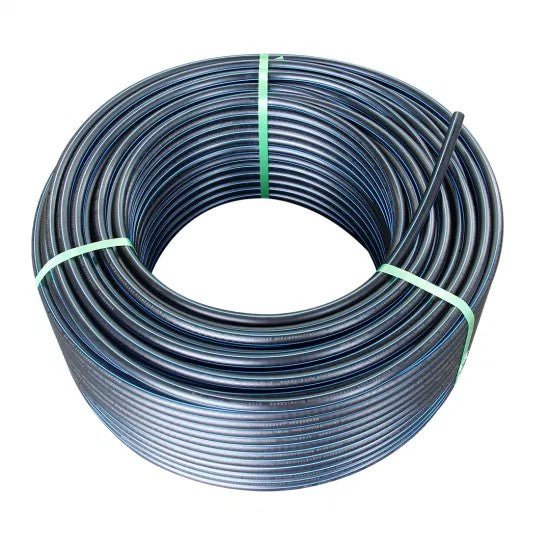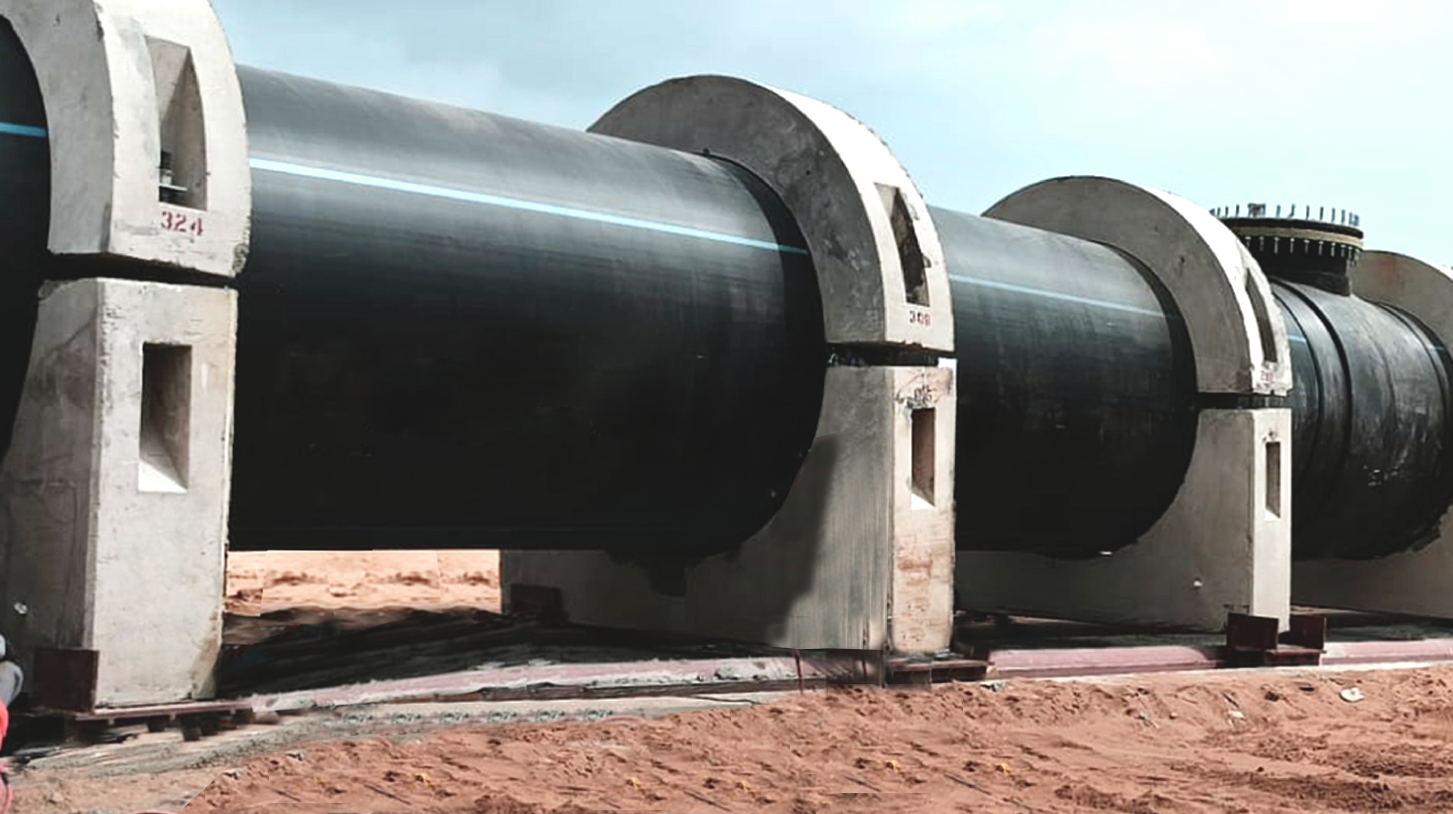Where to Source Midland TX HDPE Pipe Fittings in Stock for Urgent Orders
Explore the Manufacturing Refine Behind High-Quality HDPE Pipeline and Its Applications
The manufacturing procedure of top notch HDPE pipes is detailed and methodical. It begins with the option of basic materials that enhance efficiency. Following this, ethylene goes through polymerization to create material, which is after that shaped through extrusion. Quality control is vital, ensuring that the last product satisfies rigorous requirements. However, the journey of HDPE pipes does not finish with manufacturing. Their applications throughout different industries expose a more comprehensive significance worth examining.
Understanding HDPE: Properties and Advantages

High-density polyethylene (HDPE) is a functional thermoplastic known for its resilience and resistance to various environmental factors. This material displays outstanding tensile toughness, making it suitable for demanding applications. Its low-density structure adds to a light-weight item, promoting ease of handling and setup. HDPE likewise showcases amazing resistance to chemicals, which reduces destruction when subjected to extreme materials.
The material's low wetness absorption further improves its durability, making it excellent for use in pipelines and storage containers. Furthermore, HDPE is resistant to ultraviolet (UV) radiation, making sure that products maintain their honesty also when exposed to sunlight. Its adaptability enables for the creation of elaborate shapes without endangering strength. The green nature of HDPE, often originated from recycled materials, contributes to its allure, promoting lasting techniques in manufacturing. On the whole, these buildings and benefits make HDPE a preferred option for numerous commercial and consumer applications.
Raw Product Option for HDPE Manufacturing
The selection of basic materials for HDPE production is important to validate the final item satisfies the desired specifications and top quality criteria. High-density polyethylene (HDPE) is primarily created from polymerized ethylene, derived from fossil gas such as all-natural gas or petroleum. The top quality of these feedstocks substantially affects the mechanical and thermal residential or commercial properties of the last HDPE.
Ingredients additionally play a considerable duty in boosting HDPE's efficiency, consisting of antioxidants, UV stabilizers, and colorants, which enhance durability and resistance to environmental variables. The selection process need to think about not just the chemical make-up of the raw products yet likewise their handling attributes to assure reliable production.
Furthermore, the sourcing of raw products need to prioritize sustainability and compliance with ecological policies, as accountable practices are imperative in today's market. Inevitably, cautious raw product selection lays the foundation for producing top notch HDPE pipes suitable for diverse applications.
The Extrusion Process: Forming HDPE Pipe
The extrusion process plays a crucial role fit HDPE pipelines, beginning with thorough product preparation techniques that assure suitable circulation and consistency. Similarly important is the design of the die, which directly influences the last measurements and surface top quality of the pipe. Together, these elements contribute considerably to the efficiency and high quality of HDPE pipeline production.
Material Prep Work Methods
Effective manufacturing of HDPE pipes starts with thorough material prep work techniques, especially the extrusion process. During this stage, high-density polyethylene resin is initial dried out to get rid of dampness, guaranteeing excellent flow qualities. The resin is then fed into the extruder, where it undergoes home heating and melting, transforming right into a thick state. This home heating procedure is thoroughly controlled to keep the product's honesty and efficiency. The liquified HDPE is forced via a die, forming it into a constant pipe type. Proper temperature management throughout extrusion is crucial, as it directly affects the material's residential or commercial properties and the end product high quality. As soon as formed, the HDPE pipeline is cooled and cut to defined sizes, all set for subsequent processing and applications.
Die Style Value
Accuracy in die style plays a crucial duty in the extrusion procedure of HDPE pipelines. The die functions as the last shaping device, straight influencing the pipeline's measurements, wall surface density, and surface finish. A well-designed die assurances uniform product flow, minimizing flaws such as irregularities and weak spots. The geometry of the see this website die should be maximized to suit the certain residential properties of HDPE, including its viscosity and thermal actions throughout extrusion. Furthermore, the cooling rate of the product as it passes with the die can considerably affect the pipeline's structural honesty. Consequently, buying advanced die innovation is vital for producers intending to produce top quality HDPE pipelines that fulfill sector requirements and consumer assumptions.
Quality Control Measures in HDPE Manufacturing
Although different factors affect the quality of HDPE pipeline manufacturing, effective quality control actions are critical to assure uniformity and reliability in the end product. Key top quality control techniques include extensive product inspection, validating that the raw polyethylene meets recognized requirements for purity and thickness. Throughout the extrusion process, criteria such as temperature level, stress, and cooling time are carefully checked to preserve dimensional accuracy you can try here and architectural stability
Furthermore, post-production testing is vital; producers typically perform hydrostatic examinations to assess the pipeline's stamina and resistance to stress. Visual evaluations for surface issues further enhance quality control. Qualification from appropriate criteria companies, like ASTM or ISO, gives an added layer of trustworthiness. By executing these extensive quality assurance actions, producers can reduce defects, improve efficiency, and make sure that the HDPE pipelines satisfy the details requirements of various applications, ultimately resulting in customer fulfillment and trust fund in the product.
Applications of HDPE Pipeline Throughout Industries
HDPE pipes are used across different fields because of their resilience and convenience. In water distribution systems, they guarantee effective distribution, while in wastewater administration, they give trusted solutions for waste transportation. In addition, farming watering networks go now benefit from HDPE's resistance to corrosion and adaptability, making it a perfect selection for modern-day farming techniques.

Water Distribution Systems
A substantial variety of sectors depend on high-density polyethylene (HDPE) pipes for reliable water circulation systems. Understood for their resilience and resistance to corrosion, HDPE pipes are extensively used in metropolitan supply of water networks, farming irrigation, and commercial applications. Their light-weight nature facilitates simple handling and setup, lowering labor costs and time. Additionally, HDPE pipelines can accommodate various stress degrees, making them appropriate for both reduced and high-pressure systems. Pipe Manufacturing Midland TX. The flexibility of the material permits for smooth integration into existing facilities, reducing the requirement for considerable excavation. Moreover, HDPE's resistance to chemical leaching assurances that the water delivered remains risk-free and clean, making it a suitable option for keeping the high quality of drinkable water throughout different sectors
Wastewater Monitoring Solutions
Effective water circulation systems also lead the way for ingenious wastewater monitoring services, where high-density polyethylene (HDPE) pipelines play a significant function. Prominent for their durability and resistance to corrosion, HDPE pipelines are perfect for delivering wastewater in different setups. Their flexibility allows for simple installation in intricate atmospheres, decreasing the demand for considerable excavation. Additionally, HDPE's smooth interior surface lowers friction, boosting circulation rates and effectiveness. These pipelines are likewise immune to chemical leaching, making certain that pollutants do not jeopardize the surrounding atmosphere. Industries, communities, and therapy facilities progressively count on HDPE pipes for their reliability and longevity, making them a recommended option for contemporary wastewater management systems. This versatility underscores the critical relevance of HDPE pipes throughout countless applications.
Agricultural Irrigation Networks
Agricultural watering networks benefit significantly from the usage of high-density polyethylene (HDPE) pipes, which give efficient and trusted water shipment to crops. HDPE pipelines are light-weight, making them easy to transfer and install, while their flexibility enables for different setups in varied terrains. These pipes show excellent resistance to deterioration, chemicals, and UV radiation, guaranteeing toughness in extreme agricultural settings. In addition, their smooth interior surface area reduces rubbing loss, maximizing water circulation and decreasing energy expenses connected with pumping. The longevity of HDPE pipelines, frequently surpassing half a century, adds to lower maintenance and substitute expenditures. Subsequently, farmers significantly rely upon HDPE pipes to improve irrigation performance and advertise lasting farming techniques, inevitably causing improved plant yields and resource conservation.
Future Patterns in HDPE Pipe Modern Technology
As the demand for sustainable and reliable infrastructure grows, innovations in HDPE pipe innovation are positioned to change different sectors. Arising patterns consist of the combination of clever innovations, such as sensors and IoT capabilities, which assist in real-time tracking of pipe conditions, reducing upkeep costs and preventing leaks. Additionally, the development of innovative manufacturing techniques, such as 3D printing, is allowing the manufacturing of complex, personalized pipeline designs that satisfy details job needs.
Additionally, the emphasis on recycling and circular economy methods is driving the technology of HDPE pipes made from recycled materials, boosting sustainability. Boosted jointing approaches, such as electro-fusion and mechanical fittings, are likewise improving installation efficiency and reliability. The growing focus on ecological policies is pushing suppliers to embrace greener production procedures, guaranteeing that HDPE pipes not only fulfill sector standards however likewise promote an even more sustainable future for framework advancement.
Regularly Asked Concerns
How Does HDPE Compare to Other Plastic Materials?
HDPE outshines several various other plastic materials regarding longevity, chemical resistance, and versatility. Its reduced thickness and high tensile strength make it perfect for various applications, usually exceeding alternatives in both efficiency and long life.
What Are the Environmental Effects of HDPE Production?
The environmental influences of HDPE production include greenhouse gas emissions, energy usage, and potential contamination from manufacturing processes. Additionally, incorrect disposal can cause soil and water contamination, elevating worries about long-lasting eco-friendly effects.
Can HDPE Piping Be Reused?
Yes, HDPE pipelines can be reused. Numerous facilities accept utilized HDPE for processing, transforming it right into brand-new items. This recycling contributes to sustainability initiatives, lowering plastic waste while preserving resources and power in the manufacturing cycle.
What Is the Life-span of HDPE Water Lines?

How Do Temperature Variants Affect HDPE Pipe Efficiency?
Temperature level variations greatly affect HDPE pipe efficiency, influencing flexibility and stamina. Heats can lead to softening, while reduced temperature levels may trigger brittleness, ultimately affecting the pipe's sturdiness and suitability for various applications in diverse atmospheres.